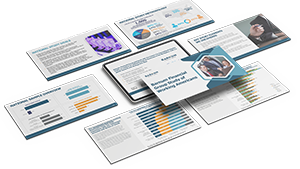The Standard Deduction and Itemized Deductions After Tax Reform
The Tax Cut and Jobs Act substantially increased the standard deduction amounts for 2018 to 2025. It also eliminated or restricted many itemized deductions for those years. You can generally choose to take the standard deduction or to itemize deductions. As a result of the changes, far fewer taxpayers will be able to reduce their taxes by itemizing deductions.
Standard deduction
The standard deduction amounts are substantially increased in 2018 (and adjusted for inflation in future years).
| 2017 | 2018 | |
| Single | $6,350 | $12,000 |
| Head of household | $9,350 | $18,000 |
| Married filing jointly | $12,700 | $24,000 |
| Married filing separately | $6,350 | $12,000 |
The additional standard deduction amount for the blind or aged (age 65 or older) in 2018 is $1,600 (up from $1,550 in 2017) for single/head of household or $1,300 (up from $1,250 in 2017) for all other filing statuses. Special rules apply if you can be claimed as a dependent by another taxpayer.
Itemized deductions
Many itemized deductions have been eliminated or restricted. The overall limitation on itemized deductions based on the amount of adjusted gross income (AGI) was eliminated. Here are some specific changes:
Medical expenses: The AGI threshold for deducting unreimbursed medical expenses was reduced from 10% to 7.5% for 2017 and 2018, after which it returns to 10%. This same threshold applies for alternative minimum tax purposes.
State and local taxes: Individuals are able to claim an itemized deduction of up to only $10,000 ($5,000 for married filing separately) for state and local property taxes and state and local income taxes (or sales taxes in lieu of income taxes). Previously, there were no dollar limits.
Home mortgage interest: Individuals can deduct mortgage interest on no more than $750,000 ($375,000 for married filing separately) of qualifying mortgage debt. For mortgage debt incurred before December 16, 2017, the prior $1,000,000 ($500,000 for married filing separately) limit will continue to apply. A deduction is no longer allowed for interest on home equity indebtedness. Home equity used to substantially improve your home is not treated as home equity indebtedness and can still qualify for the interest deduction.
Charitable gifts: The top percentage limit for deducting charitable contributions is increased from 50% of AGI to 60% of AGI for certain cash gifts.
Casualty and theft losses: The deduction for personal casualty and theft losses is eliminated, except for casualty losses attributable to a federally declared disaster.
Miscellaneous itemized deductions: Previously deductible miscellaneous expenses subject to the 2% floor, including tax preparation expenses and unreimbursed employee business expenses, are no longer deductible.
Alternative minimum tax (AMT)
The standard deduction is not available for AMT purposes. Nor is the itemized deduction for state and local taxes available for AMT purposes. If you are subject to the alternative minimum tax, it may be useful to itemize deductions even if itemized deductions are less than the standard deduction amount.
Year-end tax planning
Typically, you have a certain amount of control over the timing of income and expenses. You generally want to time your recognition of income so that it will be taxed at the lowest rate possible, and time your deductible expenses so they can be claimed in years when you are in a higher tax bracket.
With the substantially higher standard deduction amounts and the changes to itemized deductions, it may be especially useful to bunch itemized deductions in certain years; for example, when they would exceed the standard deduction. Thus, while this might seem counterintuitive from a nontax perspective, it may be useful to make charitable gifts in years in which you have high medical expenses or casualty losses.
In this environment, qualified charitable distributions (QCDs) may be even more useful as a way to make charitable gifts without itemizing deductions. QCDs are distributions made directly from an IRA to a qualified charity. Such distributions may be excluded from income and count toward satisfying any required minimum distributions (RMDs) you would otherwise have to receive from your IRA. Individuals age 70½ and older can make up to $100,000 in QCDs per year.




